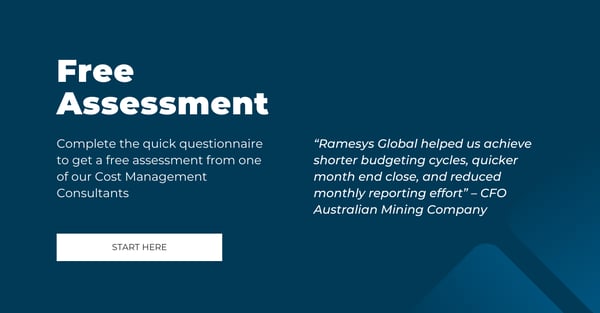Ramesys Global
Admin
- Feb 13, 2024
- 4 min read
End the “Excel hell”: Improving your Budgeting Prowess
Quality data is the holy grail for decision making in business. Having up-to-date, accurate information about your operation supports better forecasting, optimisation modelling and strategic planning.

As we know, “If you fail to plan, you are planning to fail,” according to the quote attributed to one of the US founding fathers, Benjamin Franklin.
But sound planning relies on quality information to begin with.
Just how confident are you in the accuracy – and importantly, timeliness – of the data you’re seeing in your company’s end of month reports?
Many business leaders lack confidence in the financial data at their fingertips.
Less than a third (29%) of respondents were confident that the financial data they used for financial analysis and forecasting was accurate.
Only about half (56%) of C-level executives surveyed were “completely confident” in the accuracy of their company’s financial data.
The main reason was a continued reliance on clunky spreadsheets and outdated processes that left finance and accounting teams in the dark until month-end, according to respondents.
It’s a situation that can also be found in the mining sector, where end of month reports may not be finalised until well into the following month.
For junior and mid-cap miners, delayed data means a lag before management can respond to rapidly changing situations.
This could mean a delay in addressing rising milling costs or missing opportunities for cost improvements.
Costly v high-value data
Research has shown relying on poor data can be costly.
US-based research and consulting firm Gartner recently estimated poor data quality cost organisations an average $12.9 million a year.
Beyond financial costs, there are the missed opportunities and potential hazards stemming from higher-risk decision making that’s based on poor data.
Quality data, that’s timely and accurate, is essential for good business at mining companies.
“What is critical to users is the value of the data they’re getting,” says John Goodman, an experienced chartered accountant, cost management consultant to the mining and resources industries and managing director of Ramesys Global.
“The problem with the standard approach is that it’s tough to get behind the face numbers and see what's going on.
“And so, therefore, getting to root cause analysis is not something that easily falls out of the monthly reporting process.”
The widely entrenched method of using Excel as a basis for monthly reporting can be time consuming and error-prone.
The very manual nature of the application means if multiple contributors are required to complete a budget, time will be spent disseminating, receiving and consolidating Excel workbooks.
Once reports are built, if any changes are made, the task of consolidating Excel sheets will need to be redone.
Management may also spend considerable time looking for the most recent version of an Excel file, or correcting and validating the budget when an outdated version of the file has been used.
In fact, organisations may need to do a full validation of the numbers each time a single mistake is discovered.
“I’m an accountant and I love Excel, but it has critical limitations,” Goodman says.
Now advances in automated budgeting software can make “smart use” of Excel, where small workbooks with detailed calculations can feed into a budget.
An automated budgeting system means “no more Excel hell”, with controlled data entry and version control, so you know you’re working on the most up-to-date information.
Rapid iterations and updates are possible.
Of course, making a change to a new system will require a one-time effort.
But as we’ve heard, the definition of insanity is doing the same thing over and over again and expecting a different result – a remark often credited to Albert Einstein.
Case study: I didn’t realise it was this easy to implement an alternative to Excel budgeting.
For one mid-tier miner, the change to an all-in-one budgeting, forecasting and reporting platform happened quickly and started delivering savings within weeks.
“We had one month to get our budget done and our key budget analyst had just gone on maternity leave,” the client said.
“We had a new ERP and last year’s Excel budget hadn’t been converted to new accounts."
“We used Ramesys Global to load operational budgets at the physical driven level."
“Labour budgets are always detailed and include many changes, so we linked up Ramesys Global to our labour workbooks."
“We had the first cut done within the month."
“That was when the real saving started."
“Because it was all linked through the data warehouse, we could easily run multiple iterations including all management required changes – these are now taking hours rather than days and hugely reduced errors and the validations required.”
Reduced errors, quality data, better decision making and cost savings – the holy grail is also within your reach.
Ramesys Global
Ramesys is an all-in-one budgeting, forecasting and reporting platform, purpose-built for the mining industry, that offers complete cost visibility across the entire organisation.
Our goal is to make it easier for mining companies to achieve a transparent understanding of their cost performance, develop a cost-conscious culture and create a single source of truth that helps key stakeholders make better decisions, faster.
0 comments

